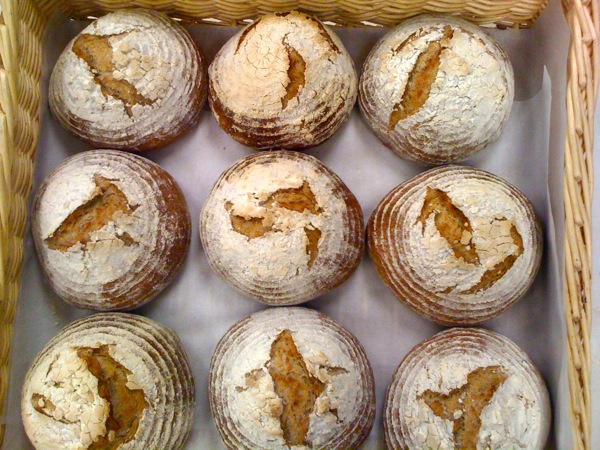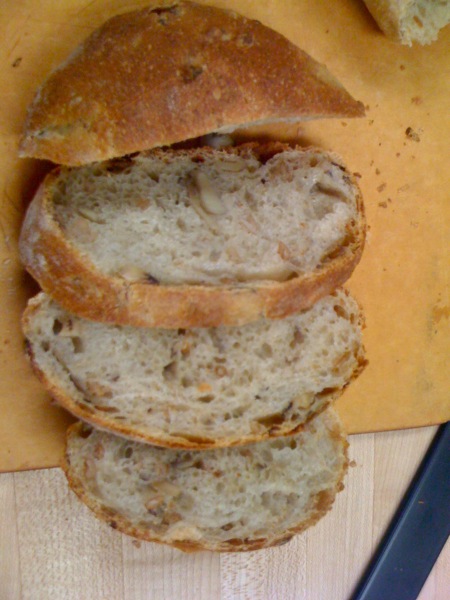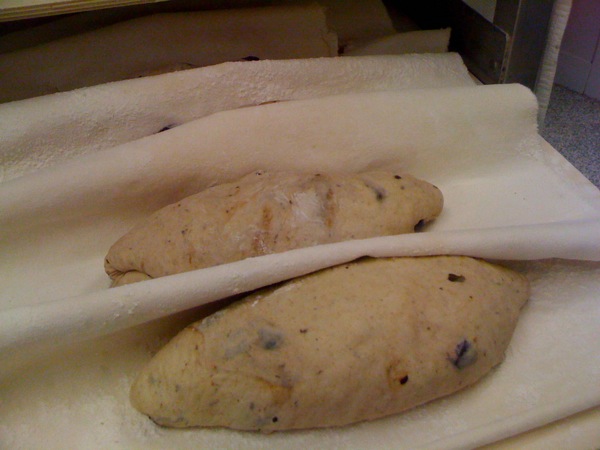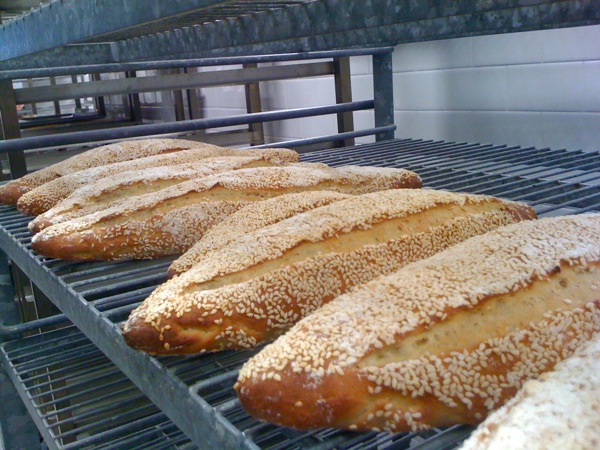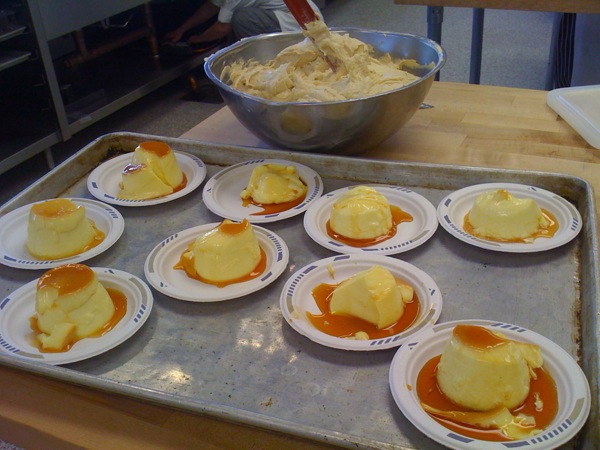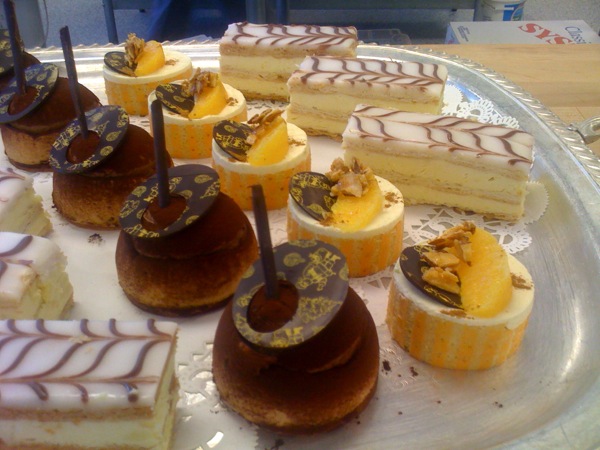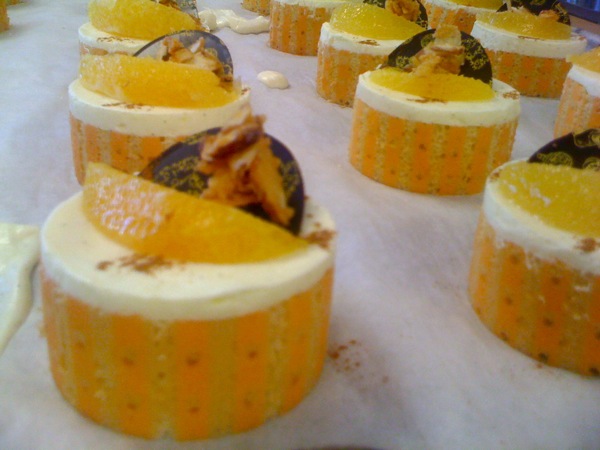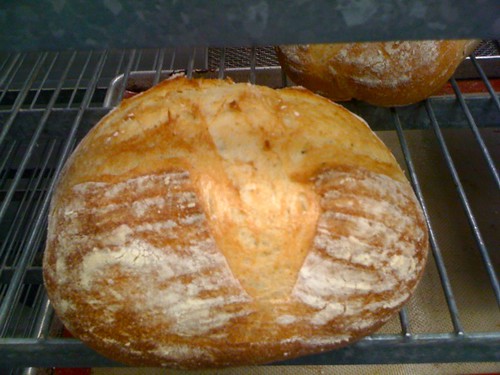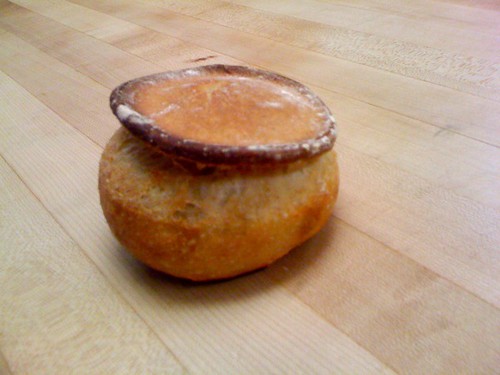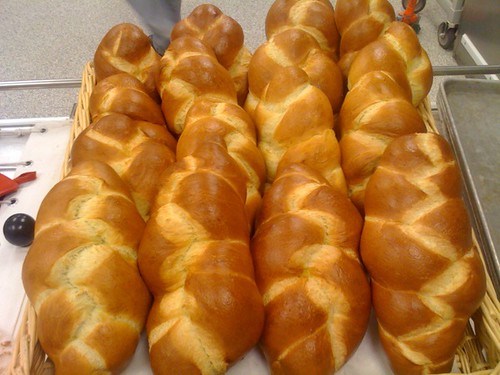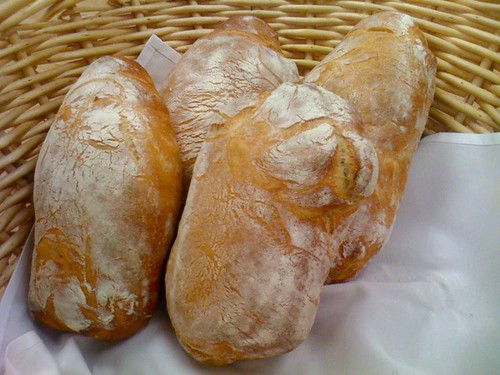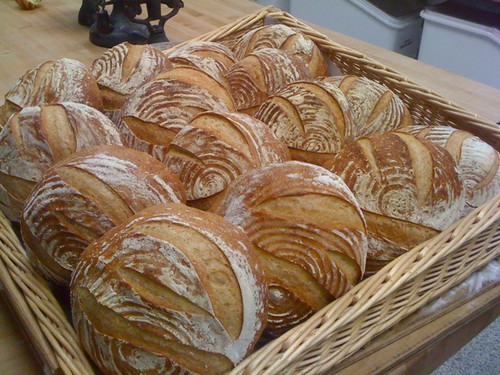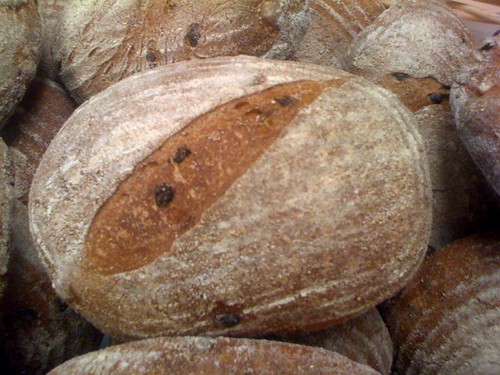Mt Hood (a hazelnut bread)
Snowcap Rye (a three-day rye bread)
Caraway Rye (a 40% rye bread with caraway seeds)
Seeded Sourdough (with flax, sunflower, sesame, and...another seed)
Beer Bread with Roasted Barley (I substituted oats)
My partner and I finished an Indian bread that we'd started the week before, called Aloo Partha. It involved a spiced potato filling wrapped in a whole wheat dough. I wish I'd taken photos as the assembly process was complex and interesting: a ball of dough is rolled out flat and filling is spread thinly over the whole. The round is then rolled into a cylinder, and the cylinder is wrapped into a spiral shape. The spiral is then rolled flat to create a round flat bread with layers of filling embedded throughout. I wish we'd made some chutney too- this bread was hearty enough to be lunch, and a dipping sauce of some sort would have completed it nicely.
The first solo bread I made was the Mt Hood. This bread required four separate preferments, which together made up roughly half of the final dough. From right to left- white sponge, whole wheat sponge, white levain, rye levain. The white sponge exploded because the container turned out to be too small to contain its growth- it more than doubled overnight!

These are combined with additional yeast, flour, salt, and in most cases water-- but I substituted an oaked hazelnut ale that a classmate of mine had made in the previous quarter. As I added this beer to the candied hazelnuts that give this bread its name (Oregon is known for its hazelnuts) I was aiming for a very nutty, slightly sweet bread with a complex flavor.
The bread seemed to like the additional yeast provided by the beer and it grew quite nicely during the bulk ferment:
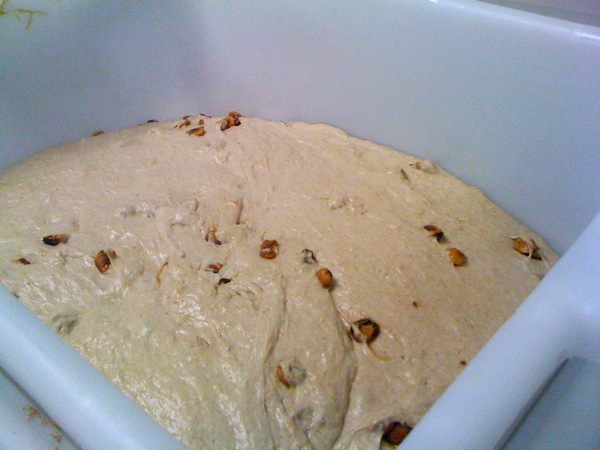
I shaped it into rounds and tried to do a pretty leaf scoring, which didn't work out so well... but the bread turned a lovely shade of brown in the oven, and came out dotted with toasted nuts:
"img src="http://farm5.static.flickr.com/4009/4311014690_a017e13f92_o.jpg">
As it turned out, this bread might be the best thing I've ever created. The hazelnuts and the beer gave it an almost nutella-like nutty sweetness, with a richness and depth from the preferments. It had a medium crumb, moist but offset by the crunch of the nuts. My coworkers devoured this bread and day-old loaves were used for what I'm told is the most amazing french toast ever. I will probably be making this bread for my fourth quarter final project.
And then, somehow in that week, I managed to make all of the other breads listed-- a minor miracle, of which I am justifiably proud-- but I forgot to take photos of all of them. Except the snowcap rye, and I'm glad I remembered that, because it's just so pretty. So I leave you with this- a hearty rye bread topped with flour before baking so that the final proof in the oven poofs the top into something resembling (the recipe claims) one of the rocky mountains. You be the judge:
